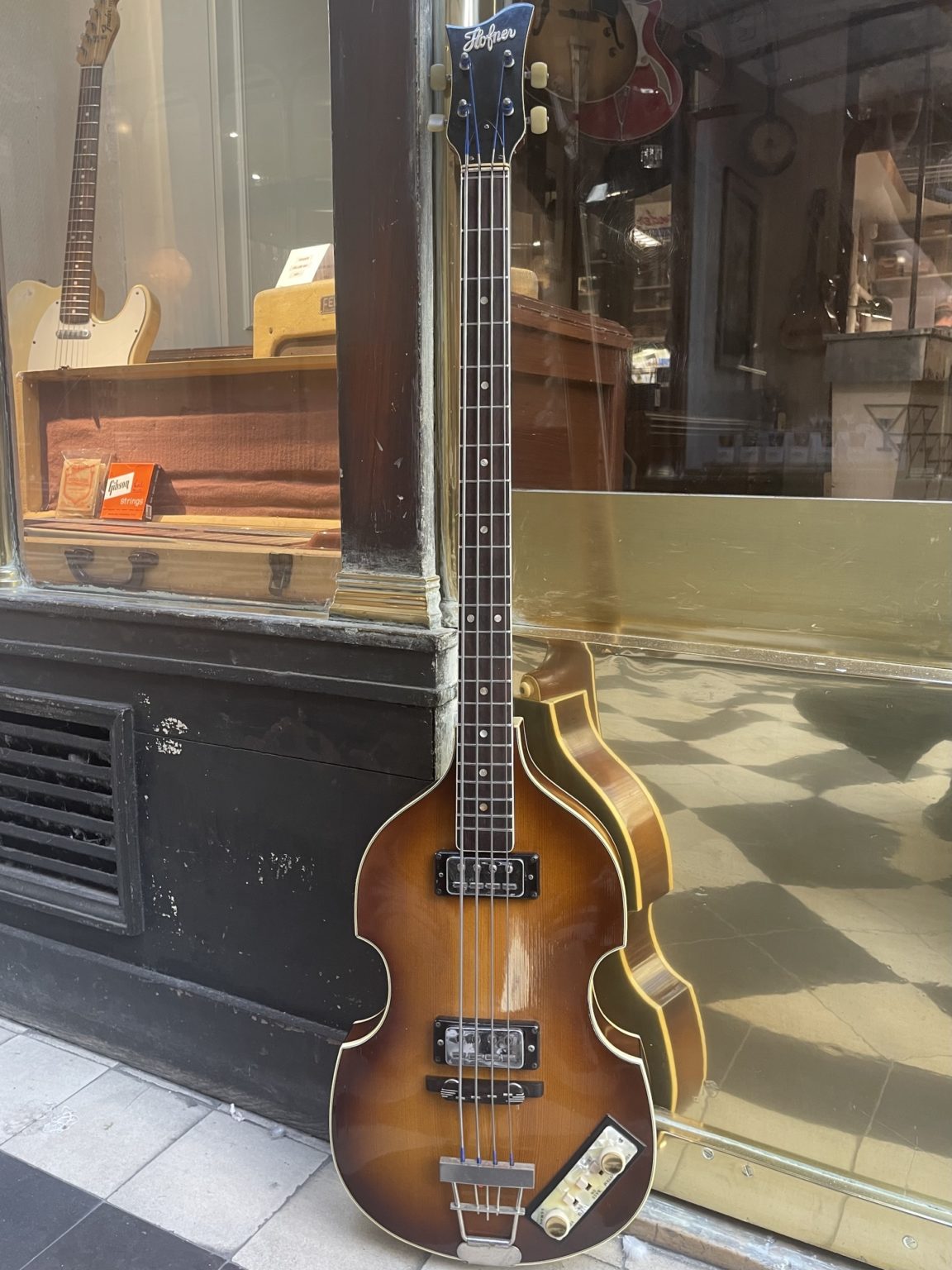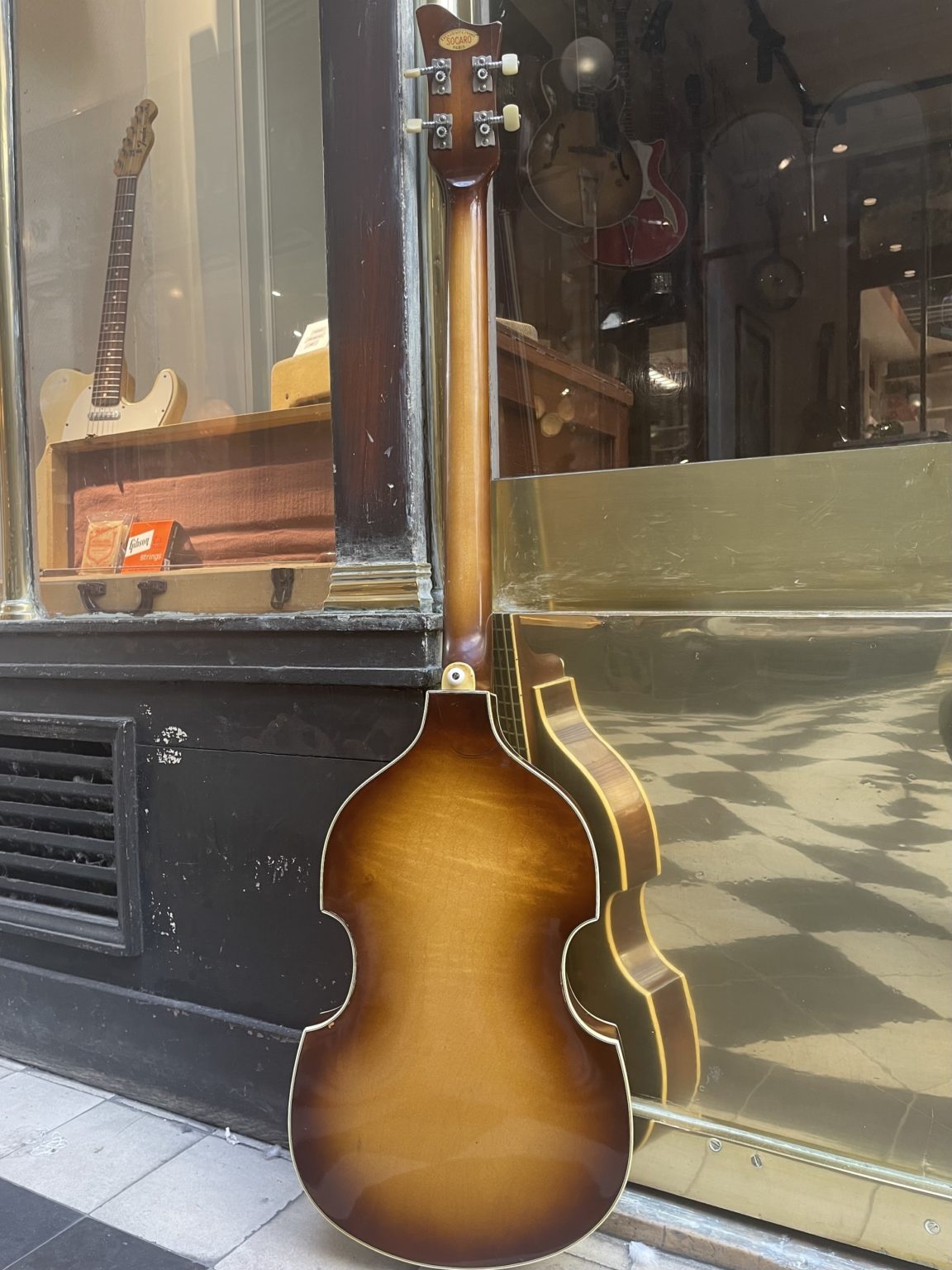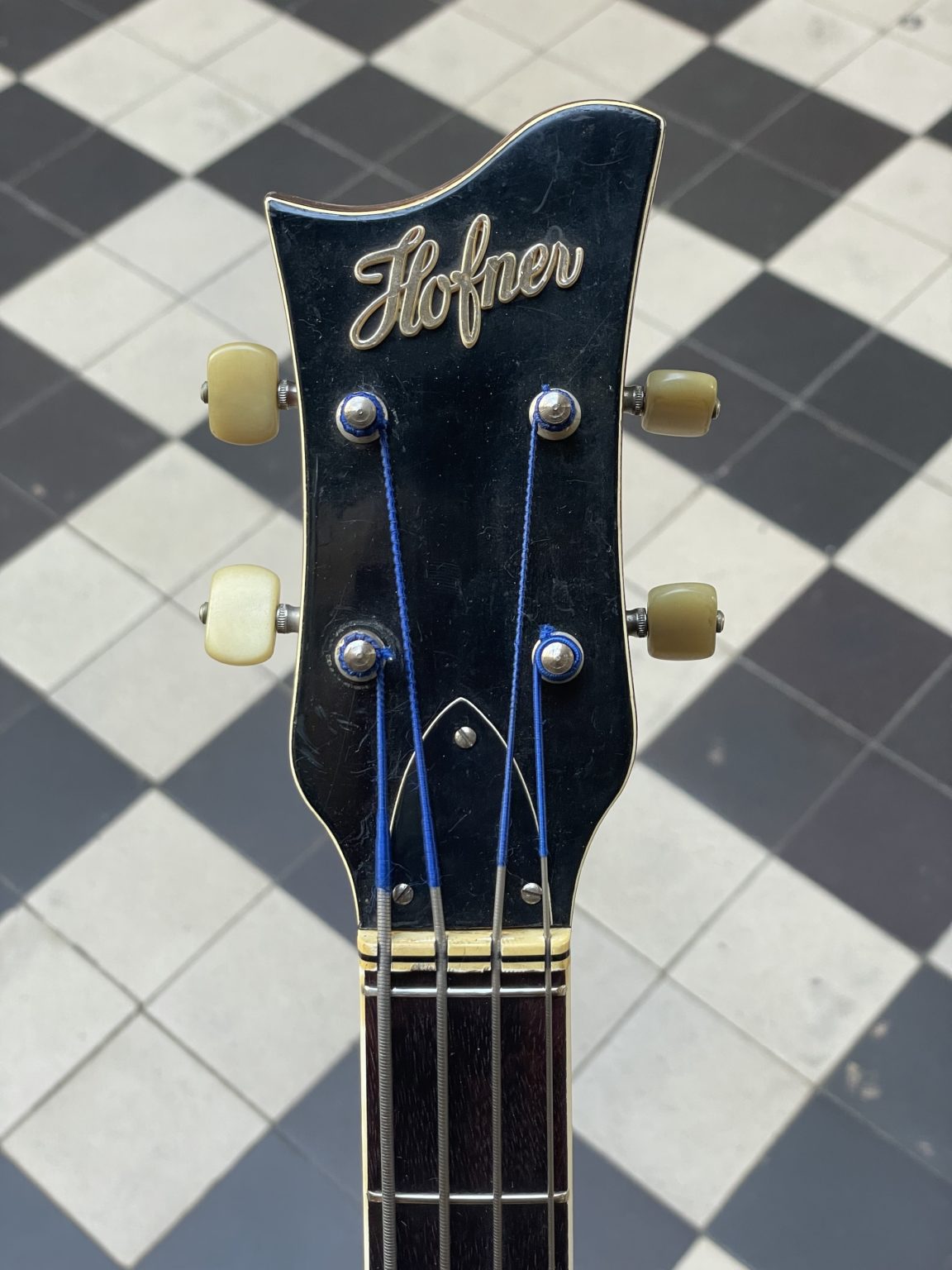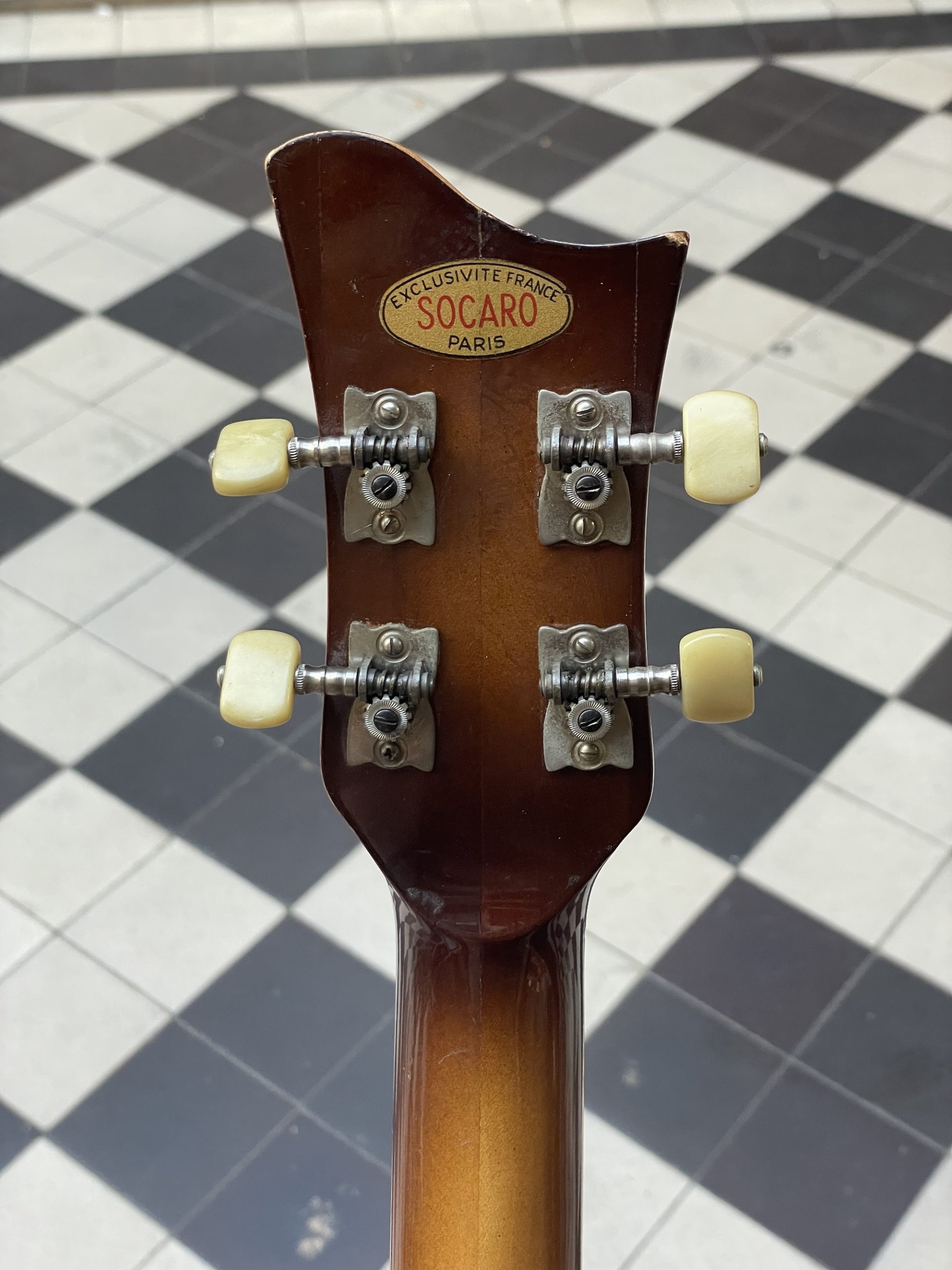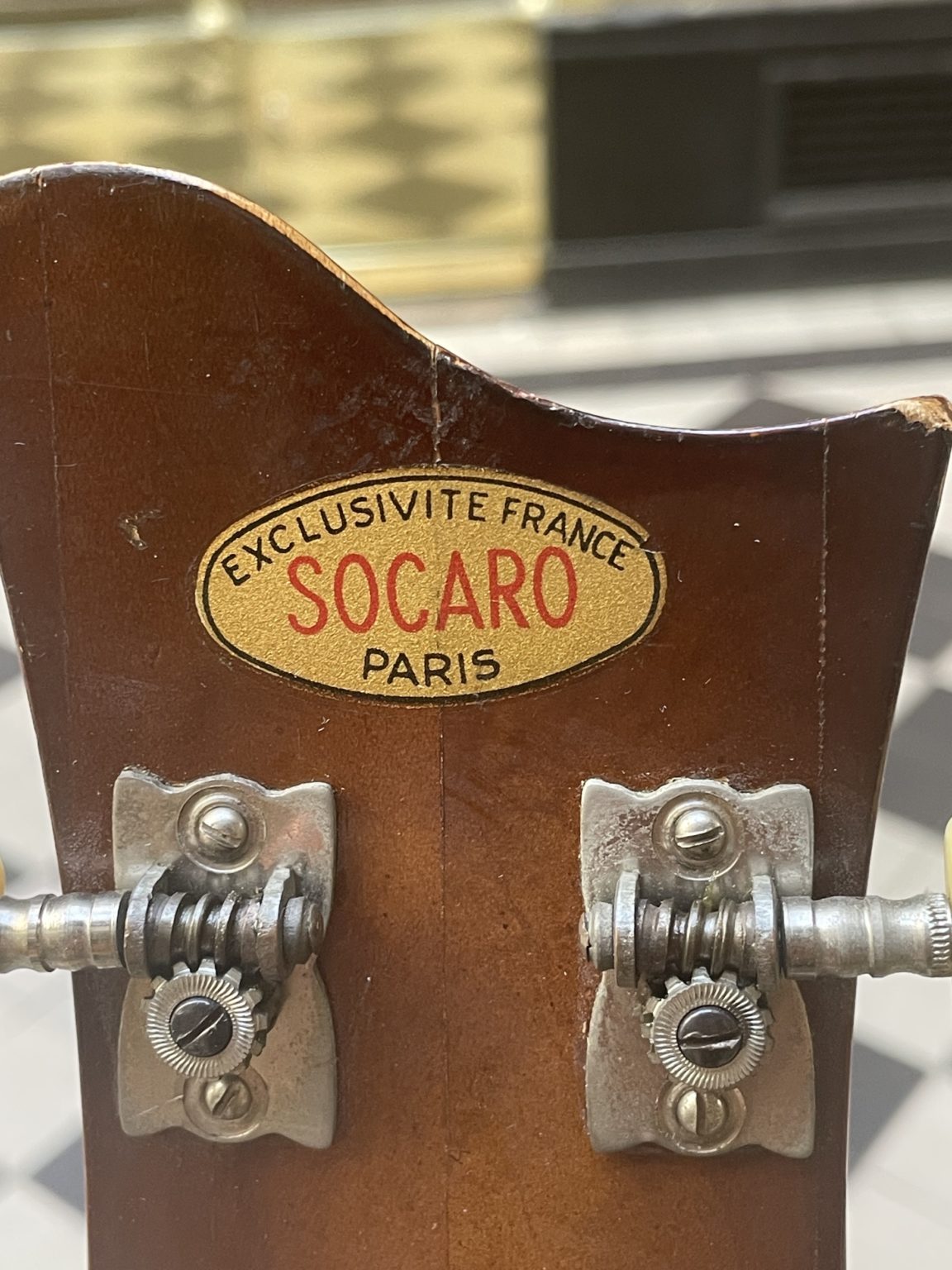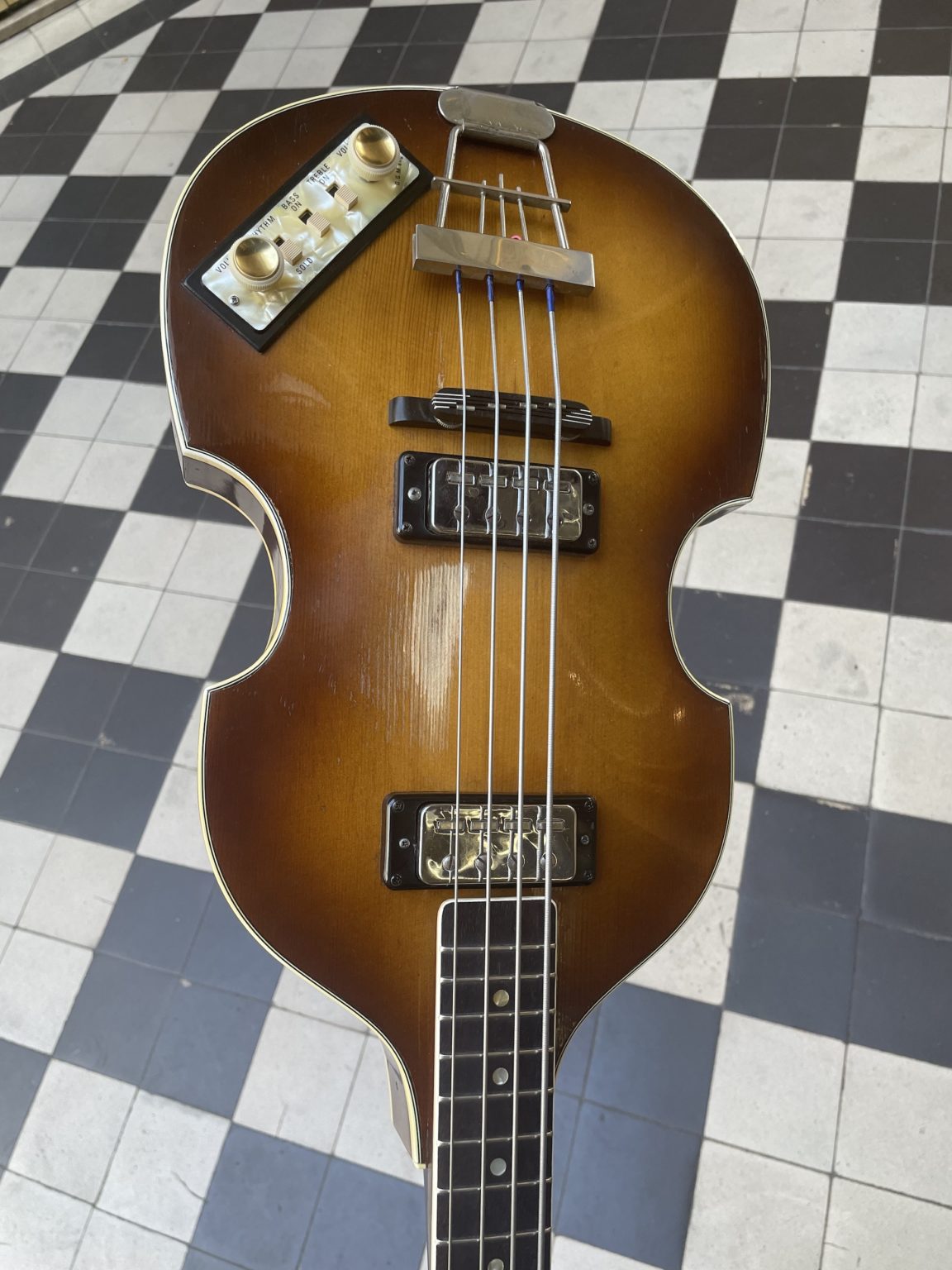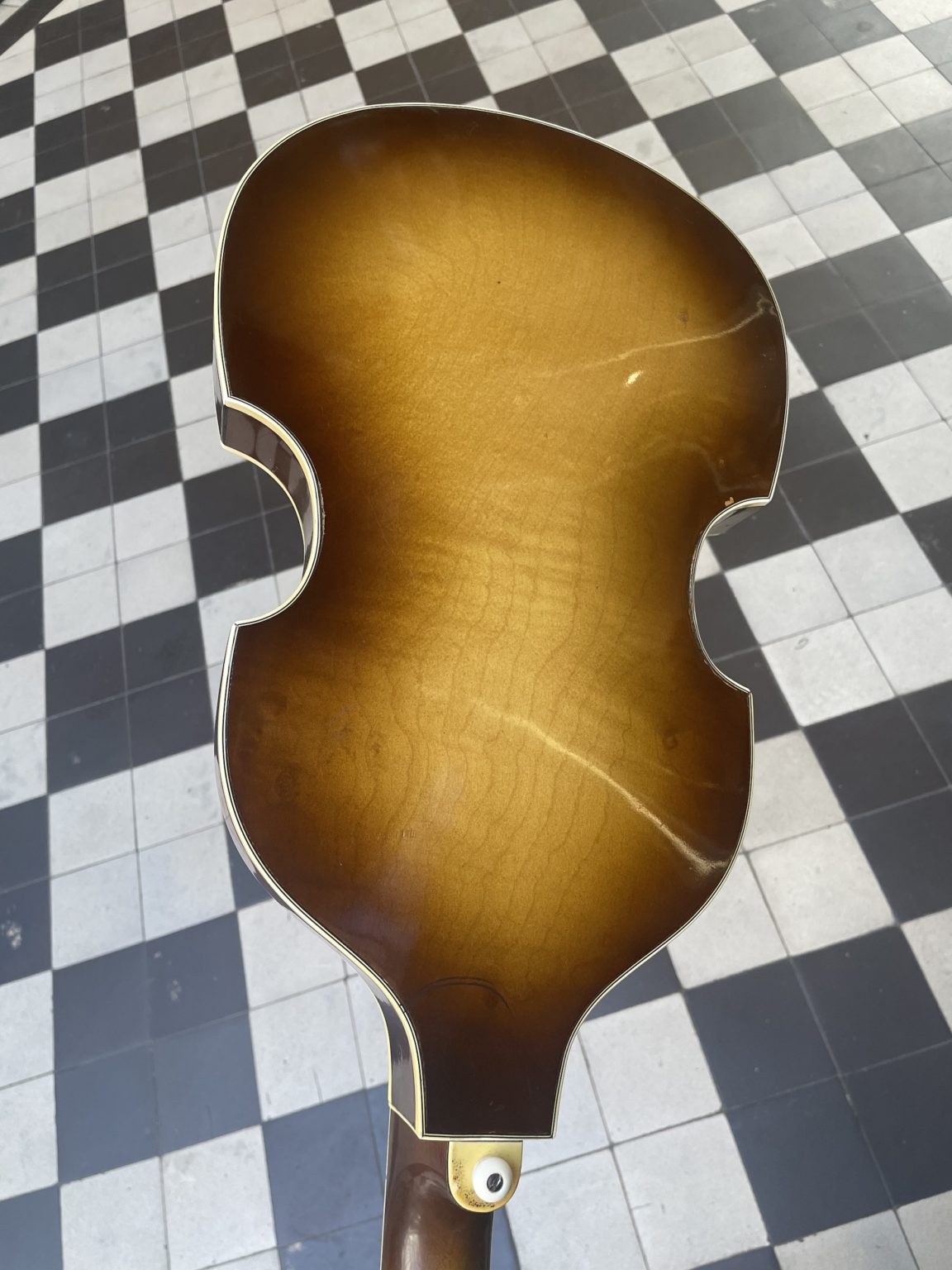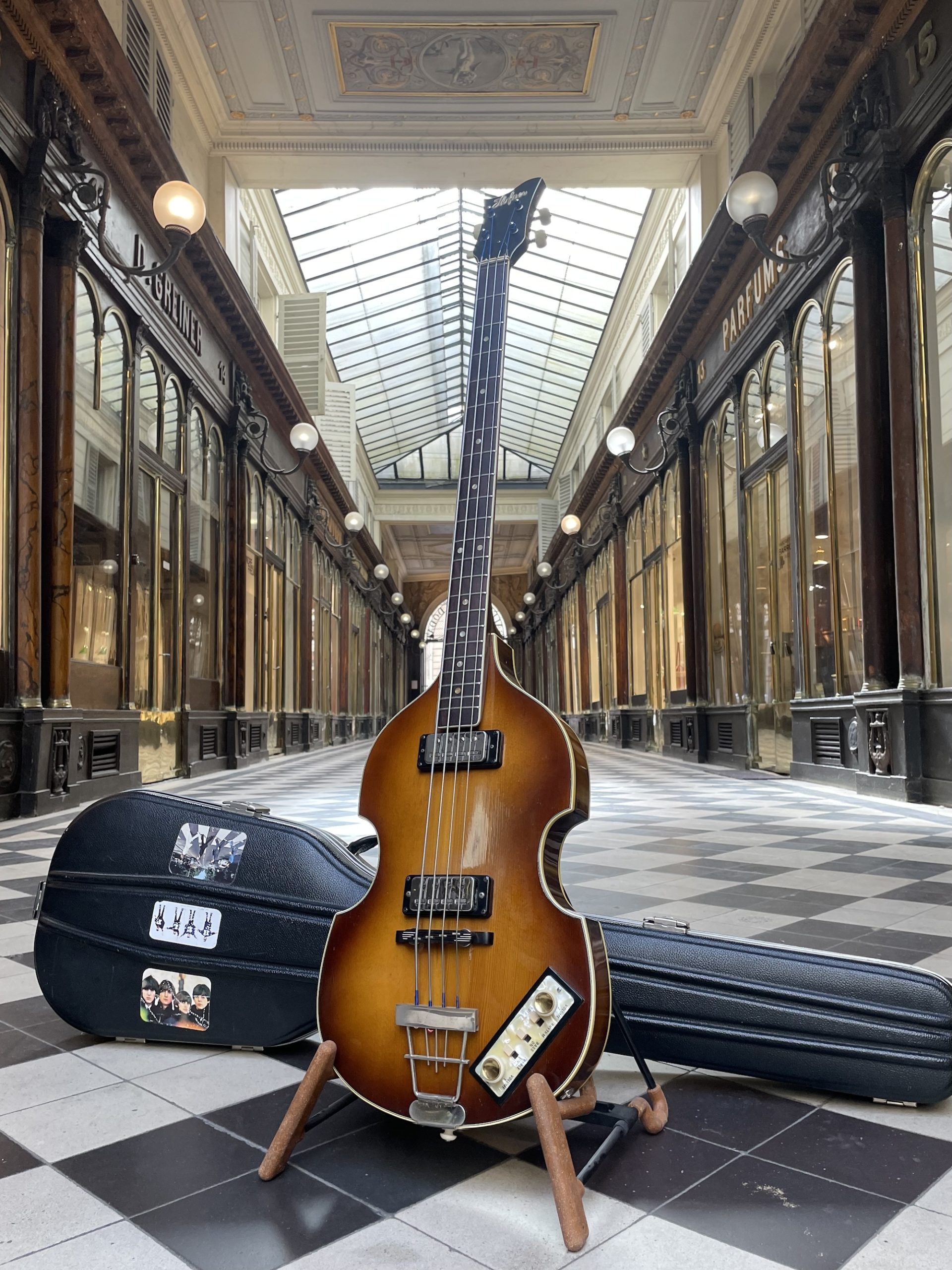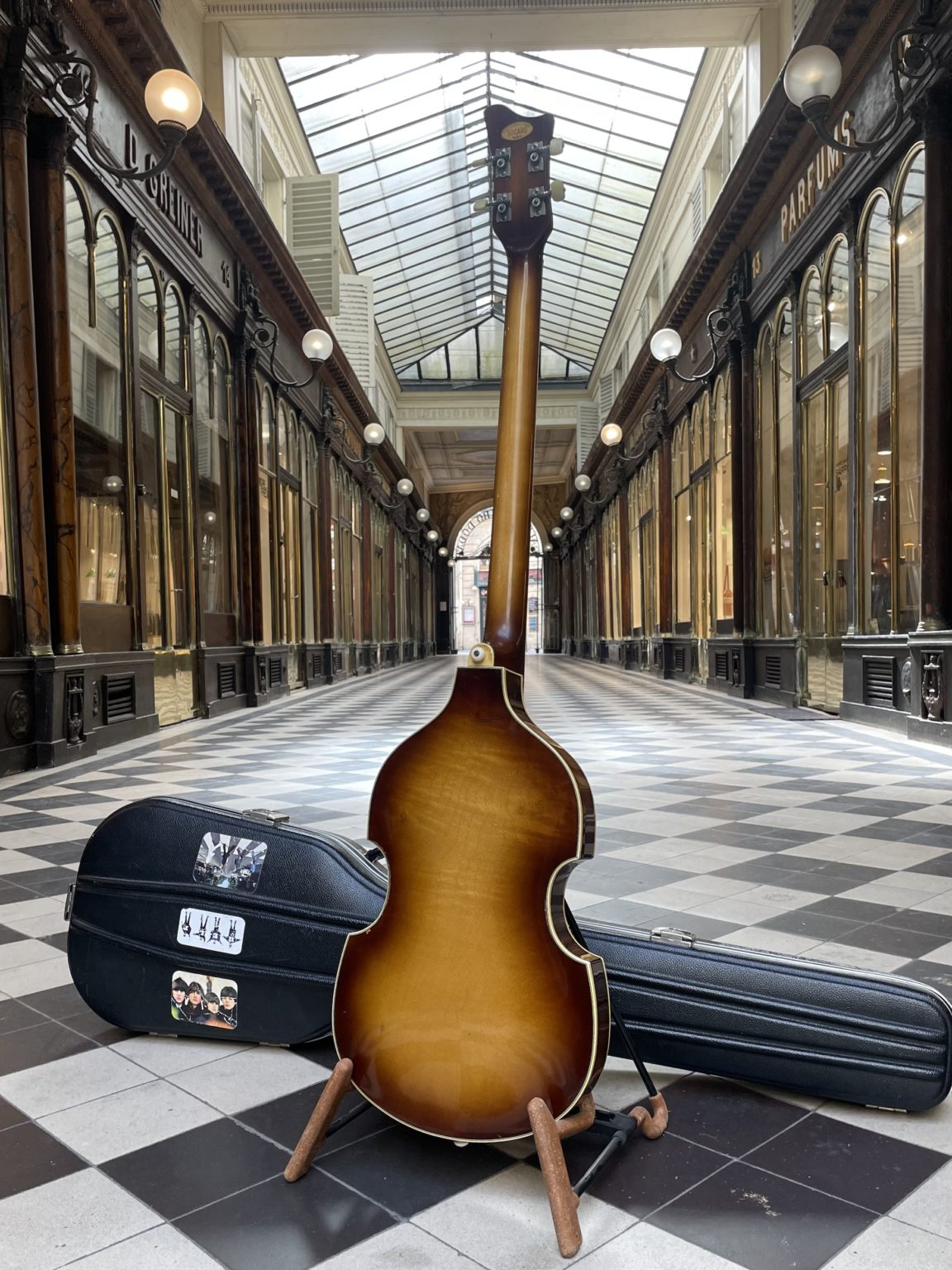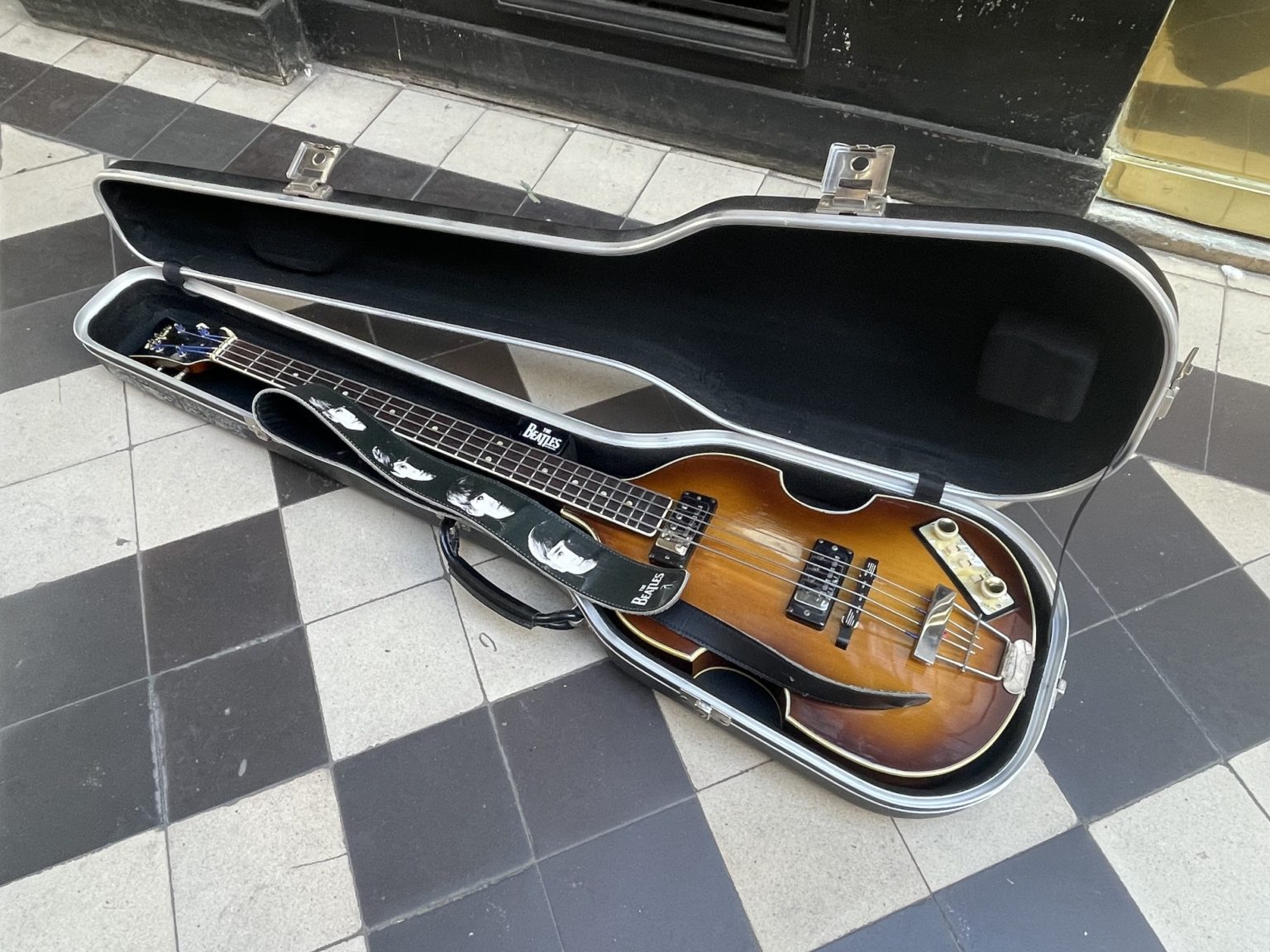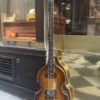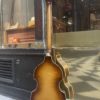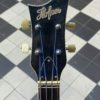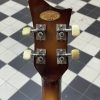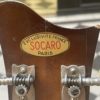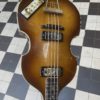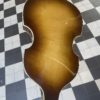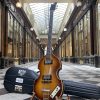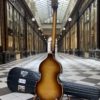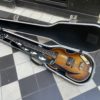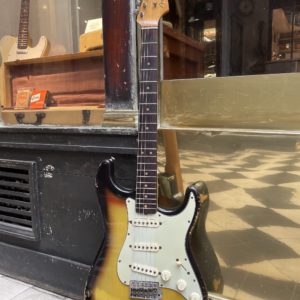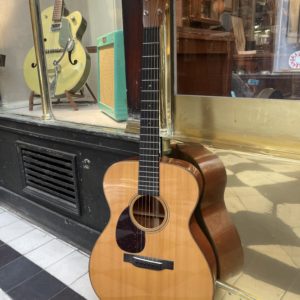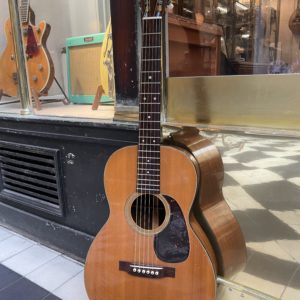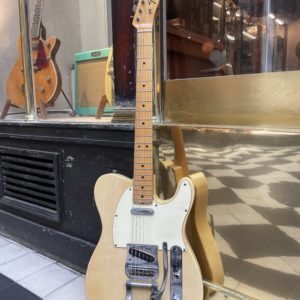c.1965 HÖFNER 500/1 VIOLIN BASS
The prices indicated correspond to the price in the case of payment in-store or by bank transfer. In the case of payment by credit card via the website, a processing fee of [3.25% + €0.25]* will be applied to the total amount of the basket, including delivery costs.
An iconic Höfner model 500/1 “Violin Bass”, made in Bubenreuth, FGR around 1965, in good overall condition.
What more can be said that hasn’t already been proclaimed about this instrument time and time again – it is without a doubt the most recognizable electric bass in the history of amplified music, alongside the Precision and Jazz Basses built across the Atlantic. However, we find an instrument eminently imbued with the Germanic lutherie tradition, which the founding father Karl Höfner employed in his violin making begun at the end of the 19th century. He was then a young luthier established in the town of Schönbach in Bohemia – this locality of the Austro-Hungarian Empire, located in today’s Czech Republic, enjoyed a notable reputation for its instrumental making, so much so that it was known as the Austrian Cremona.
A few dark pages of History later that we will leave to those who wish to explore, around 1948, the Höfner family was forced to leave the Czechoslovak Republic as part of the expulsion of the Germans from the Sudetenland and found themselves relocated to Bavaria where they founded a new instrument manufacturing factory. After a few years of administrative setbacks in post-war Germany, production got back into motion with the help of Karl Höfner’s two sons, Josef and Walter. The second is particularly esteemed for his talents as a master luthier, and had already contributed in the 1930s to the introduction of Spanish and Hawaiian guitars to the family catalog.
However, the beginning of the 1950s marked a new expansion of the guitar market, something particularly obvious in the United States where the effects of the war had been less devastating on the music industry than was the case in Germany. However, the Höfner brothers did not waste time honing their business, so much so that in 1951 they presented no less than 20 models of flattop and archtop guitars at the prestigious Düsseldorf musical instrument fair. Spanish and Hawaiian electric guitars appeared in the 1953 catalog – at that time, Höfner’s workshops were located in the FRG in the American Occupation Zone, and we can assume that the presence of American military and administrative personnel had brought the inspiration from the musical culture of the early 1950s and the instruments that represent it, notably Gibson guitars, whose first solidbody models appeared at the same time. Finally, the year 1955 saw the introduction of a new electric instrument, the keystone of Walter Höfner’s work and the one that is of interest to us: the model 500/1 Violin Bass, where tradition meets modernity.
In its initial form, the 500/1 is ultimately quite close in appearance to that which we will encounter in the decades to follow, although successive variations in pickups, hardware and certain construction details took place over the years. Although there are no business records to formally attest to this, it would seem that in its early days the Violin Bass did not meet any kind of dazzling success: estimative production totals up to 1959 struggled to reach the a few hundred examples, and Höfner’s distributors, the main one being Selmer of London represented by Ben Davis, seemed rather tepid with the bold appearance of the model and preferred instruments with more conventional shapes, notably the 500/5 bass – an irony for the manufacturer’s villain-making heritage! In fact, the 500/1 could very well have ended up blended into the mass of European lutherie, crushed as history played out by the hegemony of American guitars, if not for the intervention of a very particular character.
It was probably by chance that in 1961, a young Paul McCartney walked through the door of the Steinway store located at 29 Colonnaden in Hamburg, looking for the instrument he needed to perform with the Beatles, for whom he had just been appointed as bassist following the withdrawal of Stuart Sutcliffe. On this occasion, he discovered the existence of the 500/1, and subsequently placed an order for a left-handed instrument suited to his needs. A year and a half later, the Beatles would enter the British charts and see themselves propelled to the forefront, multiplying tours and television appearances – with McCartney systematically on the arm of his Höfner bass, whose iconic appearance would soon be desired by hordes of new Beatlemaniacs. Indeed, orders blew up in the summer of 1963, mainly through Selmer London who became the main promoter of what we can now call the Beatles Bass, and the instrument underwent a series of developments to meet this newfound colossal demand.
The instrument presented here, produced around the second half of 1965, reflects the advancement of these developments, with the following characteristics: the top of the instrument is made of laminated spruce and molded into an arched shape; the back and sides are constructed of laminated maple, with the entire body bearing a Sunburst finish; the neck is made of two-piece maple; rosewood fingerboard surrounded by a white celluloid binding; two 511B staple pickups with wide surrounds and threaded baseplates allowing them to be adjusted in height; a shortened tailpiece compared to previous versions; a set of four individual open back tuners. We also find on the back of the headstock the label of the vendor Socaro, frequently encountered on Höfners sold for the French market. This instrument shows signs of past use: we note wear linked to playing on the top, as well as the absence of its pickguard. The assembly including potentiometers and electronic components was also replaced. However, the bass remains nicely preserved, and perfectly playable: it is not affected by neck angle issues which notoriously plague this model, and after refretting and completely reworking of its setup elements in our workshop it has found a low action and optimal playability. We must express our particular appreciation for this model: with its short scale length of approximately 30 inches and its ultra-light, reduced-format hollowbody body, it is, in our opinion, a completely unique instrument among the pantheon of 20th century music.
Sold in a modern fitted hardshell case, with a strap and a set of mediators featuring the Beatles.
SOLD


